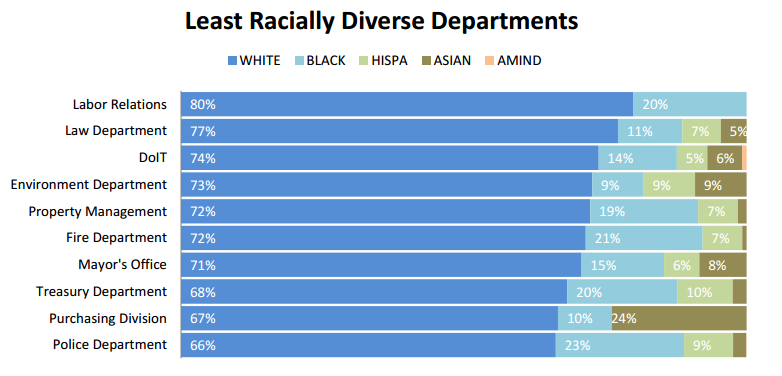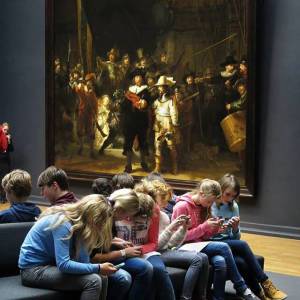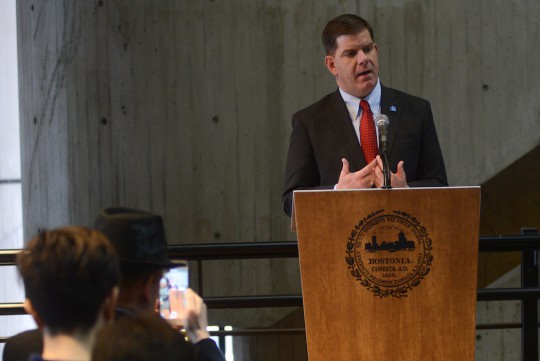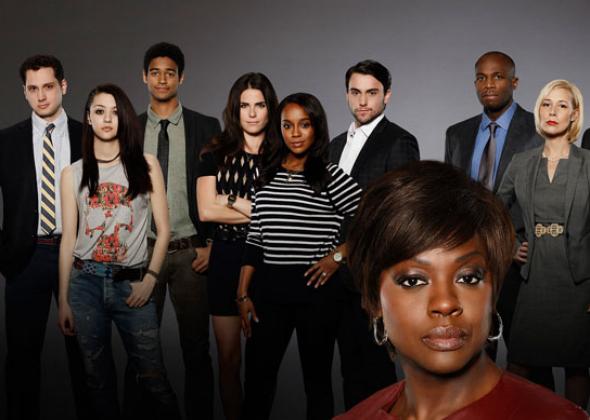available for purchase
at this time.
In The Intersection
Link Roundup! – 5/15/15
May 15, 2015Link Roundups feature articles and bits of internet goodness that our dramaturgy team digs up. If you find something you want to send our way, drop us a line on Facebook or Twitter!
♦♦♦♦♦
A group of black students from Harvard’s Graduate School of Design, frustrated with a lack of coursework that deals with race and social justice issues in design, have compiled their own syllabus for CityLab:
“Practitioners need to improve their proficiency with regard to working on social equity issues,” says Carlton Eley, an urban planner who works for the U.S. Environmental Protection Agency. He notes that there are professionals of color in organizations like the National Organization of Minority Architects* (NOMA) who are thinking critically about these issues, but are often overlooked by the mainstream design community…“The issue is an ideology that finds its roots in architectural modernism, which eliminates ethnocultural and even sociocultural conditions from the variables that define quality architecture,” says Lee. “When we eliminate these essential considerations, we lose the ability for architecture to respond to the colloquial design languages of the people it serves.”
♦♦♦♦♦
At HowlRound, Julia Rada explores the terminology “safe space” and what it means for educational spaces:
I have been thinking about how we, as practitioners, almost compulsively talk about “safety” in our work, particularly in the studio or classroom, as though it is embedded in what we do. Safety is ubiquitous in our vernacular; we ensure it almost by reflex. What is safety, though? What are we really trying to get at when we talk about “safety?” Can we actually ensure it? Isn’t education and art-making intended to be risky? If we are taking risks and growing, can we ever be truly safe?
Link Roundup! – 5/8/15
May 8, 2015Link Roundups feature articles and bits of internet goodness that our dramaturgy team digs up. If you find something you want to send our way, drop us a line on Facebook or Twitter!
♦♦♦♦♦
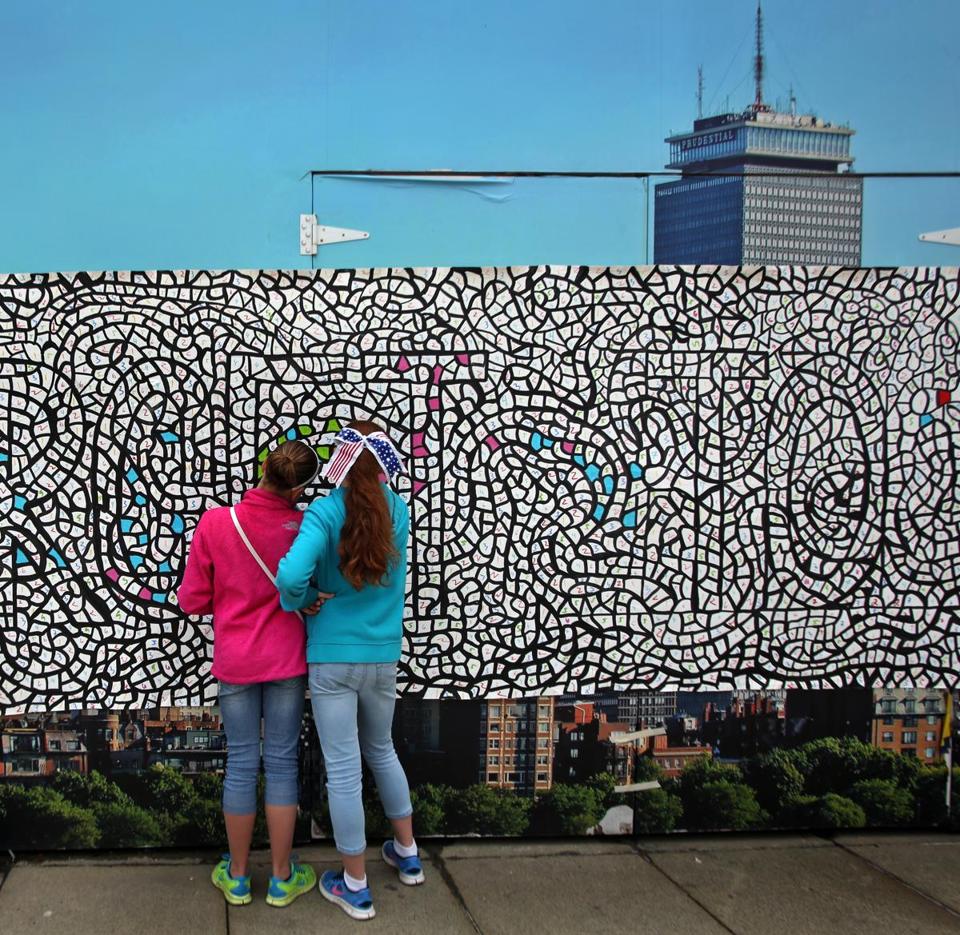
A 60-foot community mural was created outside of the Prudential Center on Memorial Day last year. Photo: Globe file
The Boston Globe recently highlighted some national trends in city development and looked at how arts and culture can be integrated into the development happening in Boston:
More cities have undertaken cultural planning to shape a coherent approach to advancing the arts. Cultural planning looks different in each place, as it should. Yet, when we consider the cities where cultural planning has been most effective, we consistently find an ambitious, inclusive, communitywide effort to develop a shared vision and blueprint for arts and culture — one that prioritizes, coordinates, and aligns public and private resources to strengthen cultural vitality long term.
♦♦♦♦♦
 Create Equity looked at the barriers that prevent people from participating in cultural and artistic activities if they are from lower socioeconomic and educational backgrounds:
Create Equity looked at the barriers that prevent people from participating in cultural and artistic activities if they are from lower socioeconomic and educational backgrounds:
Data from the survey shows that fewer low-income individuals attend pop and rock concerts than their wealthier counterparts, and significantly fewer of them attend visual arts festivals and craft fairs. In fact, people with lower incomes and less education are less likely to read books, go to the movies, take an arts class, play a musical instrument, sing, dance socially, take or edit photographs, paint, make scrapbooks, engage in creative writing, or make crafts. All told, the data paints a consistent portrait of lower participation by low-SES adults in a breathtaking range of visual, performing, literary, and film activities…When large numbers of people face barriers to participating in the arts in the way they might want to, we know that we’re missing opportunities to improve people’s lives in concrete and meaningful ways.
Link Roundup! – 5/1/15
May 1, 2015Link Roundups feature articles and bits of internet goodness that our dramaturgy team digs up. If you find something you want to send our way, drop us a line on Facebook or Twitter!
♦♦♦♦♦
100 Resilient Cities showcased five creative placemaking engagements in several cities, based on projects supported by either the NEA’s Our Town program or ArtPlace America: There are some cool examples:
The Los Angeles County Arts Commission conducted a deep investigation into the cultural life of the Willowbrook neighborhood to develop an arts-related asset map and visioning document. They used this information to ensure the community’s spirit was reflected in the county’s ongoing capital and infrastructure improvements.
♦♦♦♦♦
Gwydion Suilebhan’s keynote address at the Association of Performing Arts Service Organizations about technology and how it’s transforming relationships between artists, audiences, and arts institutions is worth a read:
But the most important key to a sound technology practice is empathy. When you build things, you absolutely have to begin by thinking about real people and their real desires and needs…So, to the extent that you and your organizations are ready to practice technology with the organizations you serve—to build stuff, either for them or with them (and with them is almost always better)—you absolutely can’t gear your practice around their organizational needs. You have to have actual human beings in mind. The things they care about. The tasks they want to accomplish on any given day. And, yes, their relationships.
Forum on Race in America – Ta-Nehisi Coates at Johns Hopkins University
April 30, 2015Earlier this morning, Ta-Nehisi Coates, a writer and correspondent for The Atlantic, spoke at Johns Hopkins University in Baltimore, Maryland for the inaugural event in a series of forums on Race in America. Coates was joined by Dr. Nathan Connolly, JHU Assistant Professor of History, and Dr. Debra Furr-Holden, JHU Associate Professor of Mental Health for a conversation that was livestreamed here.
Initial remarks spoke to the recent events in Baltimore surrounding the death of Freddie Gray and the #BaltimoreUprising, as well as the ingrained culture of day-to-day violence that exists in communities of color. Later, conversation topics touched on historical roots of inequality and how language and policy shapes marginalized communities, before a Q&A with the audience. It’s a fantastic and timely conversation that is well worth checking out.
Link Roundup! – 4/24/15
April 24, 2015Link Roundups feature articles and bits of internet goodness that our dramaturgy team digs up. If you find something you want to send our way, drop us a line on Facebook or Twitter!
♦♦♦♦♦
The ARTery has details on a report released last week by the city’s office of Diversity, calling for new strategies to diversify the city’s workforce after uncovering some sobering statistics about how gender and race are represented in Boston:
Overall, the report finds the city’s workforce is predominantly white (58 percent) and does not reflect Boston’s diverse population. Hispanics make up 18 percent of the city’s population, but only 11 percent of the city’s workforce while Asians make up 9 percent of the city’s population, but only 4 percent of the city’s workforce, according to the report. However, blacks make up 23 percent of the city’s population and 26 percent of the city’s workforce, according to the report.
But, when it comes to leadership positions (department heads) all minority groups are very much underrepresented, the report found — 74 percent are white, 18 percent are black, 5 percent are Hispanic and 3 percent are Asian.
♦♦♦♦♦
In his post on the Butts in Seats blog, Joe Patti looks at the Quartz post breaking down the recent Pew Research study stating that kids from different economic backgrounds use social media differently. There are some interesting takeaways for organizations looking to reach young and economically diverse audiences online:
Income and race also often determine whether someone has access to a desktop or tablet computer. In any case, it seems increasingly important to make sure your website design is mobile friendly (h/t Drew McManus) if you want teens to have positive interactions with it as that is increasingly the platform of choice.
Link Roundup! – 4/18/15
April 18, 2015Link Roundups feature articles and bits of internet goodness that our dramaturgy team digs up. If you find something you want to send our way, drop us a line on Facebook or Twitter!
♦♦♦♦♦
In the most recent post on Bitter Gertrude, Melissa Hillman examines the negative online reactions that the photo below received and how it highlights the importance of engaging with young audiences on their own terms:
We talk a lot about wanting to engage the rising generation in theatre, and I’m seeing a lot of “what can we do about this?” commentary on this picture. Listen: If you want to engage the rising generation, the first thing you need to do is stop lying to yourself about them. You’ll fail to engage them if you don’t approach them with honesty…This is exactly why 99.999% of “audience engagement strategies” fail miserably to bring in young, diverse audiences. This is why “tweet seats” failed. We’re not looking at this generation honestly. Instead we look at studies designed from the outset to confirm our hypotheses. We make assumptions about how the rising generation thinks and feels based on how they make us think and feel. We refuse to engage them on their own terms, instead dictating the terms to them and then blaming them for boorishness when they fail to meet them.
♦♦♦♦♦
Seth Lepore’s HowlRound essay about the importance of entrepreneurship and the blind many college theatre programs have about it has been getting lots of online buzz this week:
The blind spot of most college professors needs to be understood for what it is. A lot of college teachers who are tenure track have been in school their whole lives. Creating their own work has been in the context of academia and the relationship to both process and theory. Practitioners in the academy always have a place to rehearse and develop new work. They don’t have to worry whether people attend the performance and if it will break even or not. When showing a new work, they are part of an infrastructure that already subsidizes them. The business skill set doesn’t seem to fit into “What Would Artaud Do?” They are focused on students building a performance skill set. I’ve actually heard some of these well-meaning professors say “If they want that information, they can take a course with the business school.”
Link Roundup! – 4/10//15
April 10, 2015Link Roundups feature articles and bits of internet goodness that our dramaturgy team digs up. If you find something you want to send our way, drop us a line on Facebook or Twitter!
♦♦♦♦♦
The WBUR ARTery featured this week’s presentation of the cities new cultural plan, Boston Creates, announced by Mayor Walsh and Julie Burros:
Boston Creates, or #BostonCreates, is the umbrella title for a 10-year plan to provide resources for the creative community, while engaging — and challenging — artists and audiences to articulate priorities for how those resources should be spent.
♦♦♦♦♦
Slate writer Aisha Harris spoke to several film and television actors of color about their experience during the recent “diversity boom” in Hollywood:
There’s also the question of what diversity actually means to casting directors. Wise characterizes the goal as “digestible diversity,” or a certain type of non-white look: Asian actors with typically American or European features (like freckles, she suggests); black women with a lighter skin complexion. You’ll go into an “all ethnicities” casting call, she tells me, and “without fail, you’ll wonder who got that [part], and it’ll be someone German (whose father is kind of half-black).” This perspective seems to have borne itself out in at least one particularly notable—and racist—casting call for the upcoming N.W.A. biopic Straight Outta Compton, which made headlines last year. In it, sought-after women were, whether intentionally or not, ranked in groups from “A” to “D” by race, class, and skin tone. (Group B, for instance, consisted of “fine girls,” who “should be light-skinned.” Group D, on the other hand, was listed as “African American girls. Poor, not in good shape. Medium to dark skin tone.”)
Link Roundup! – 4/3/15
April 3, 2015Link Roundups feature articles and bits of internet goodness that our dramaturgy team digs up. If you find something you want to send our way, drop us a line on Facebook or Twitter!
♦♦♦♦♦
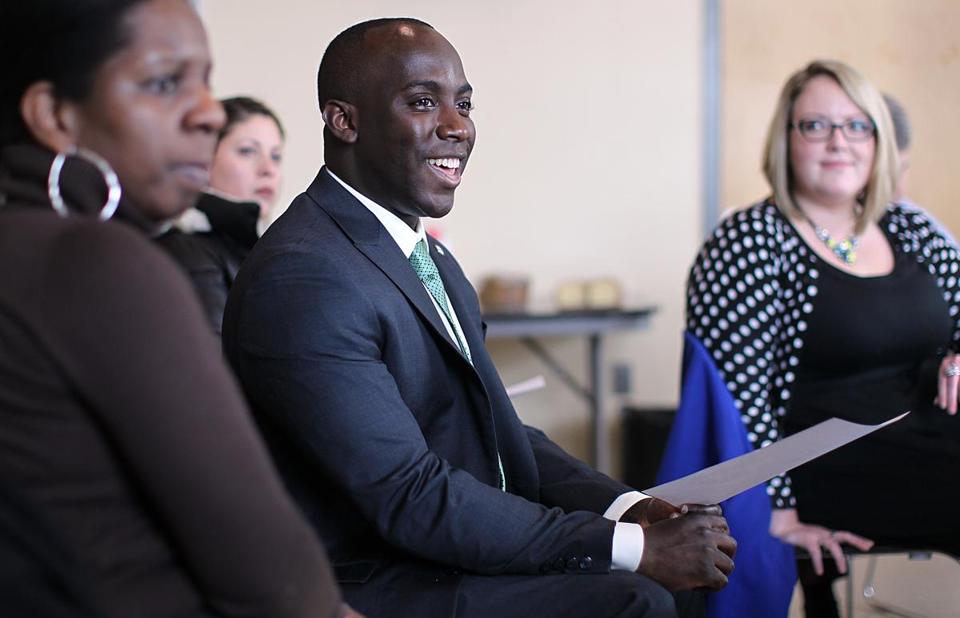
Shaun Blugh, 30, has been appointed the City of Boston’s first-ever chief diversity officer. Photo: Suzanne Kreiter/Globe staff
The Boston Globe has a story about the mayor’s new Office of Diversity and their efforts to make Boston workforces more equitable:
A glimpse at the city’s roughly 15,000 full-time employees underscores their challenge. In a city in which people of color constitute 53 percent of the population, Boston’s municipal workforce remains 61 percent white, according to records released to the Globe under the state’s open records law. Women slightly outnumber men at City Hall, but on average are paid 7 percent less than their male counterparts.
♦♦♦♦♦
The Non Profit with Balls blog has a post up about “Fakequity” — a term he coined for organizations that claim to be interested in creating equity, but don’t participate in active change:
So how does this apply to Equity? People seem to think that forming an equity committee, talking about equity, sending staff and board to trainings, “listening” to communities, conducting research and gathering data, and adding terminologies to websites and brochures are sufficient to achieving equity. But no, these things are necessary, but not sufficient. When we just talk about Equity and go no further, we are guilty of Fakequity. I’ve seen many well-meaning organizations and foundations spend years talking about equity, congratulate themselves on it, and don’t do anything else that would actually help to bring about Equity.
#StaffChat: TCG’s Audience (R)Evolution Convening
March 28, 2015March 28, 2015
#StaffChat posts feature articles and news that the C1 team discusses as part of our weekly all-staff meeting. We’d love to hear your thoughts too — hit us up on Facebook or Twitter!
♦♦♦♦♦
This past week, the Theatre Communication Group — a membership organization for professional theatres in the US —hosted a convening as part of their Audience (R)Evolutions series:
Audience (R)Evolution is a multi-year program designed by TCG and funded the Doris Duke Charitable Foundation to study, promote and support successful audience engagement models across the country. This new initiative encompasses four phases unfolding over three years: research and assessment; convenings; grant-making; and widespread dissemination of audience engagement models that work.
200 theatre professionals, including Company One’s own Sarah Shampnois and John J King, met from March 25-27 in Kansas City to discuss best practices and new models for building bridges between the work on our stages and the work out in our communities. A full agenda of the convening can be found HERE, and a list of attendees HERE.
As part of this week’s #StaffChat, we’ll be hearing from Sarah and John about their experiences and ah-ha moments, and we’re brushing up on some big ideas about audience engagement from within the TCG model.
Here’s a starting point:
Q: How does TCG define “Audience Engagement” and “Community Development?”
A: The Audience (R)Evolution program has been instituted to fully explore audience engagement and community development strategies, practices and working models. Not every organization or individual defines the “audience” in the same way, but for the purposes of the Audience (R)Evolution program, TCG uses the term as all-inclusively as possible. With our exploration of audience engagement, TCG is expanding beyond the idea of a traditional, transaction-based relationship with theatre patrons, and is instead referring holistically to the exchange between theatre-makers and theatre-viewers.
More succinctly, TCG differentiates between “Audience Engagement” and “Community Development” in the following way:
• Audience Engagement builds opportunities for dialogue between theatres and audiences and includes a full spectrum of goals, strategies, tactics and outcomes.
• Community Development connects theatres and non-arts sector partners using artistic assets to build collaborative and mutually beneficial projects addressing community needs.
Both utilize activities that encompass building, deepening, and listening to audiences and potential audiences to determine what is relevant to them; and serving, informing, and opening communications with them to build long-lasting relationships.
Link Roundup! – 3/27/15
March 27, 2015Link Roundups feature articles and bits of internet goodness that our dramaturgy team digs up. If you find something you want to send our way, drop us a line on Facebook or Twitter!
♦♦♦♦♦

Peter Friedman, Danny McCarthy, Michael Countryman, Hannah Bos and Carolyn McCormick in “The Open House” by Will Eno at Signature Theatre. (Photo by Joan Marcus)
In American Theatre, Issac Butler writes about several contemporary playwrights who are taking the traditional realistic living room family drama and turning it on its head:
In the current crop of anti-realist plays are Eno’s The Open House and Jacobs-Jenkins’s Appropriate, both mounted last season at New York City’s Signature Theater, and Young Jean Lee’s Straight White Men, a recent critical success at the Public Theater. Next season, Taylor Mac’s Hir will have its East Coast debut at Playwrights Horizons. All these plays simultaneously deploy and subvert various tropes of the genre: difficult fathers, family secrets, eccentric mothers, a compressed time scheme, money worries—and, well, white people.
They’re also all set in and around living rooms, the most common and persistent setting in contemporary American theatre.
While it can be frustrating to walk into a theatre and see yet another couch in front of yet another television three feet away from yet another cluttered bookshelf, the ubiquity of this setting isn’t hard to understand. After all, the living room’s history and linguistic roots intersect with American theatre’s primary concerns. “Living room” is simply the American term for the parlor, whose name derives from the French parler, to talk. It is figuratively, then, a space for talking. Parlors are also a middle-class (or, if you must, bourgeois) invention, much like the theatres that regularly reproduce them onstage.
♦♦♦♦♦
Jason Tseng, the Community Engagement Specialist at Fractured Atlas, has a compelling essay up at Medium about LA’s 99-seat Theatre Plan and the issue of funding for small companies:
The top 3% of arts organizations by budget size ($10M and above) received 60% of all arts and culture funding. Conversely, the bottom half of organizations by budget size ($100k and below) received only 5% of that funding.
Not only is this deeply problematic from a purely class perspective, Holly also notes that this wealth gap disproportionately effects racial and ethnic minority communities, as well as other oppressed groups. This phenomenon is also not limited to the U.S. In fact, a similar report out of Britain cautioned that drastic changes to arts funding need to occur in order to avoid a “cultural apartheid.”


